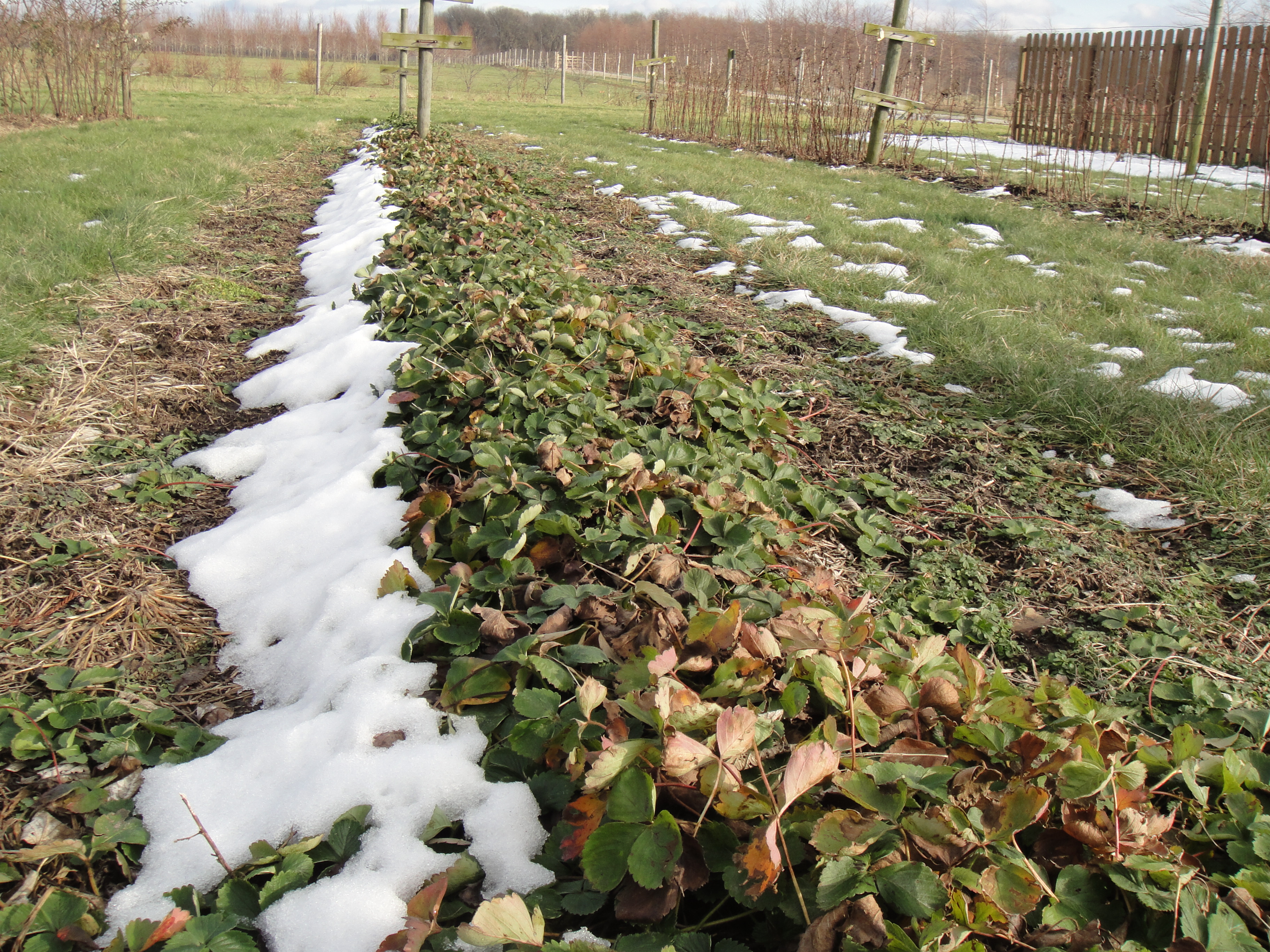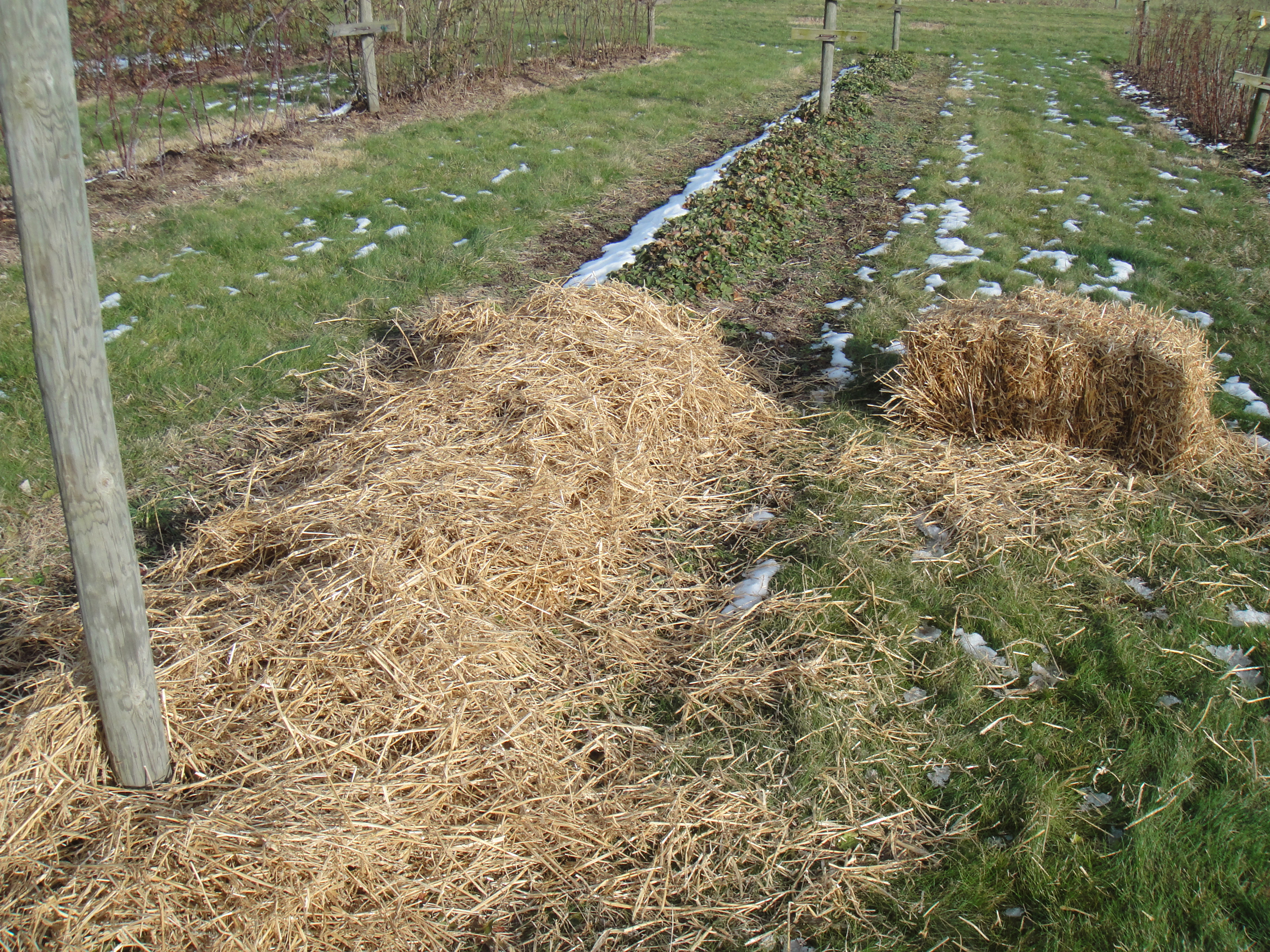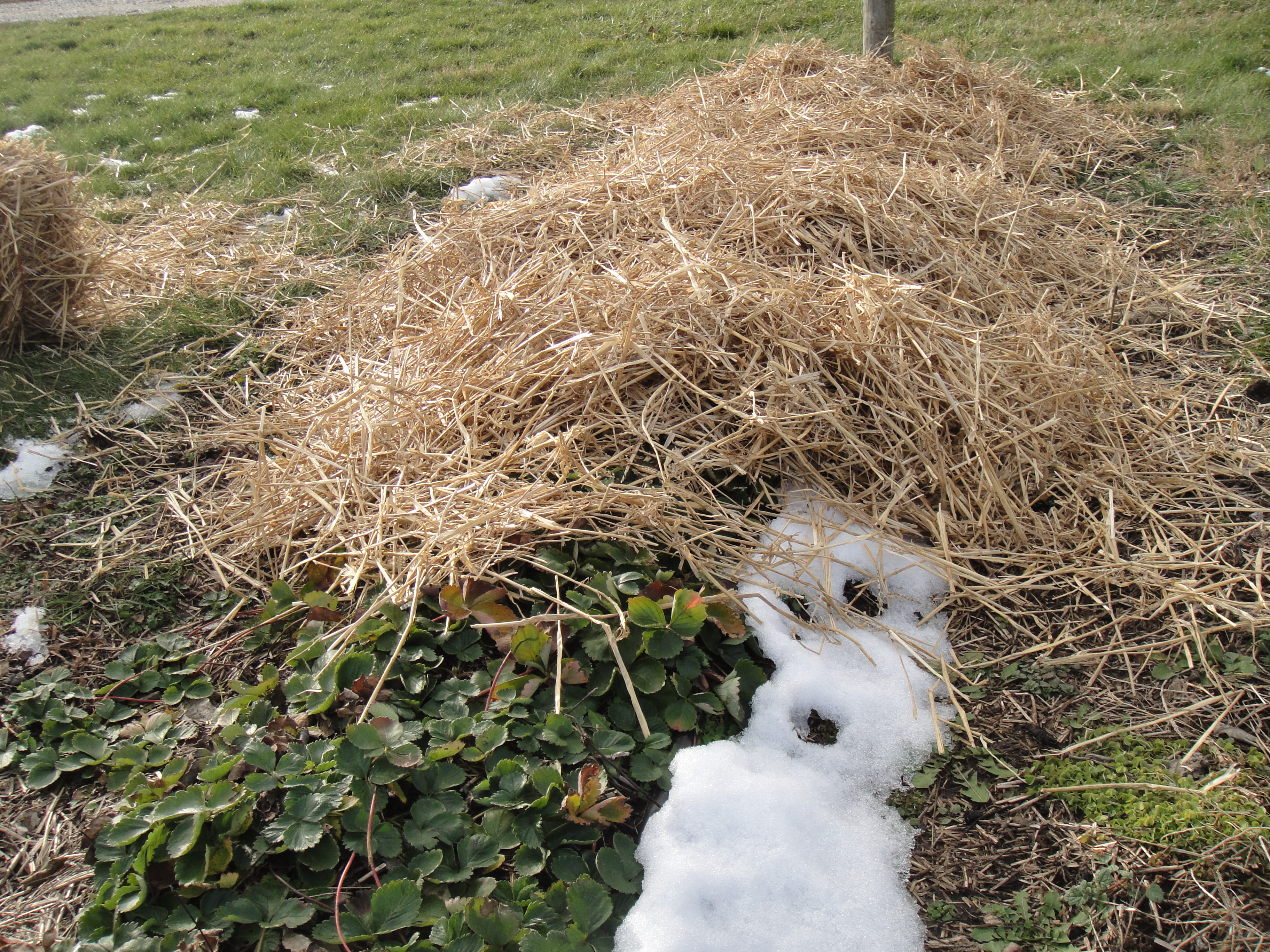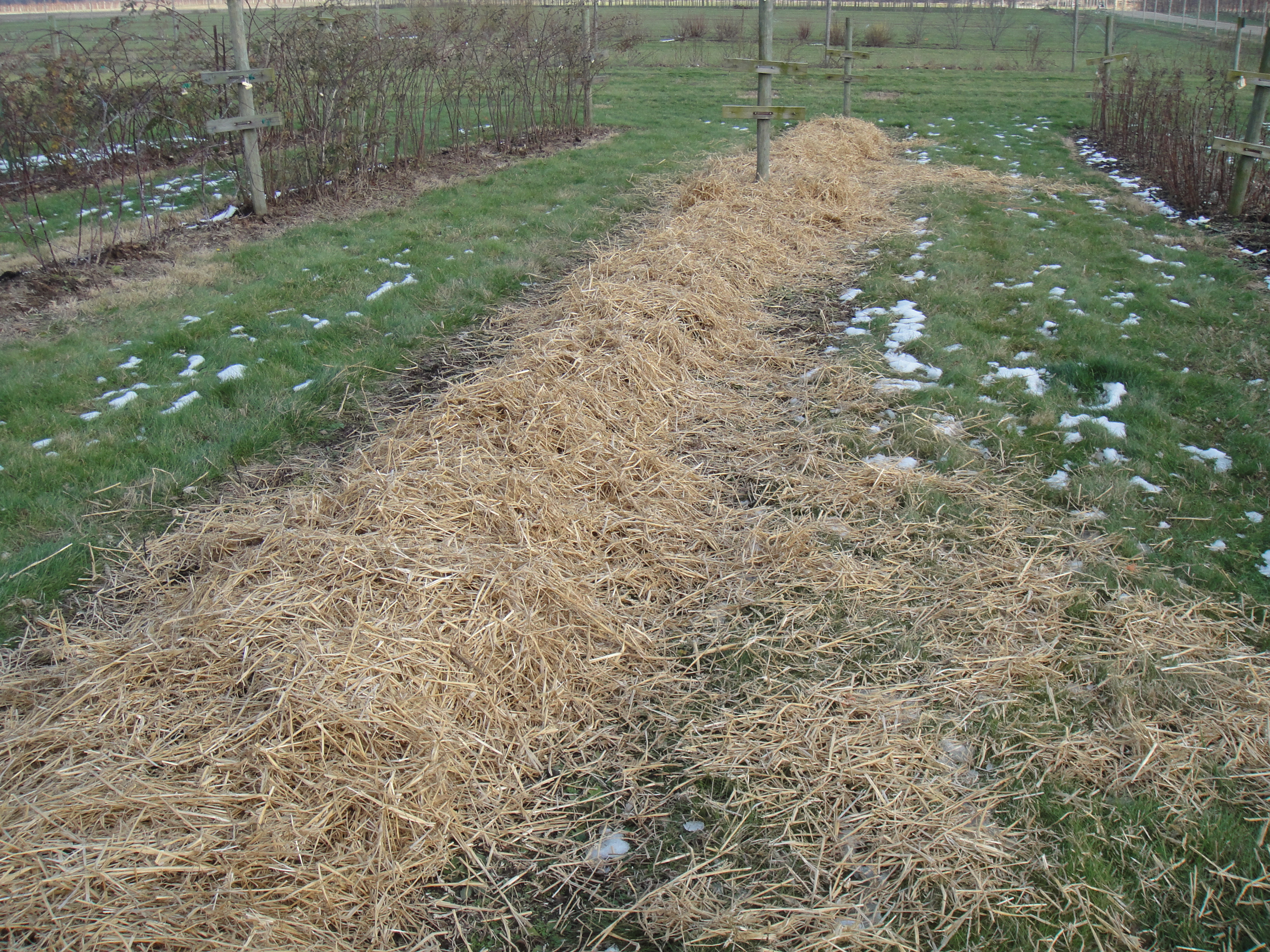Picture of the Week
November 28, 2022
Overwintering Strawberries
Bruce Bordelon, Professor-retired, Department of Horticulture and Landscape Architecture
Strawberries are among the most popular fruit to grow in the home garden and are a popular commercial crop as well. But growing strawberries in our climate can be challenging. While strawberries are well adapted to the region, for best results they need winter protection to ensure that crowns survive the winter in good condition to produce a crop next year. Winter protection is provided by mulching the strawberry planting after the plants go dormant (Picture 1).
Mulch material: The best mulch for strawberries is clean wheat straw (Picture 2). It provides a good air buffer without becoming too wet and smothering the plants. Straw should be weed-free and dry. Moldy straw is not suitable. Similarly grass clippings and leaves are generally not suitable as they become too wet and smother the plants, leading to decay of the strawberry crowns.
Click image to enlarge
Amount: Straw should be applied loosely at least 2 inches deep. Ideally, about 4 to 6 inches of loose straw is applied over the strawberry row (Picture 3). Rain and snow will compress this layer as the season progresses.
Timing: Mulch should be applied after strawberry plants go dormant. This normally occurs in mid-December after a few consecutive nights of 20˚F temperatures occur. That has already occurred this year so the time is right to get straw mulch applied. Mulching too early can lead to damage of actively growing leaves. Waiting too late leads to increased risk of cold injury. While strawberries retain green color throughout the winter in milder climates, the plants begin to take on a grayish cast after the leaves are exposed to cold temperatures (Picture 4). At that point, they are dormant and can be covered without damage. Mulched strawberries are capable of surviving -20˚F with little damage (Picture 5).
Removal: Straw is removed in the spring when 4-inch soil temperatures reach about 40˚F. Ideally straw is raked off the top of the row, leaving just enough straw suppress weeds and prevent berries from coming into contact with soil, but not preventing new leaves from emerging. Straw adjacent to the row provides a clean surface for pickers and also prevents soil from splashing onto berries.
More information about strawberry production can be found in HO-46 Growing Strawberries https://www.purdue.edu/hla/sites/yardandgarden/extpub/growing-strawberries/






